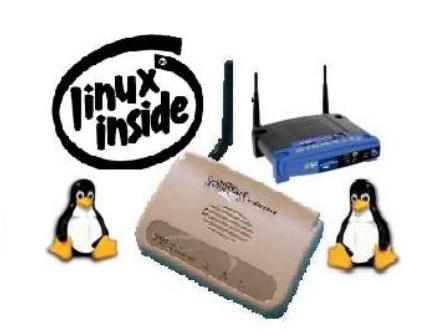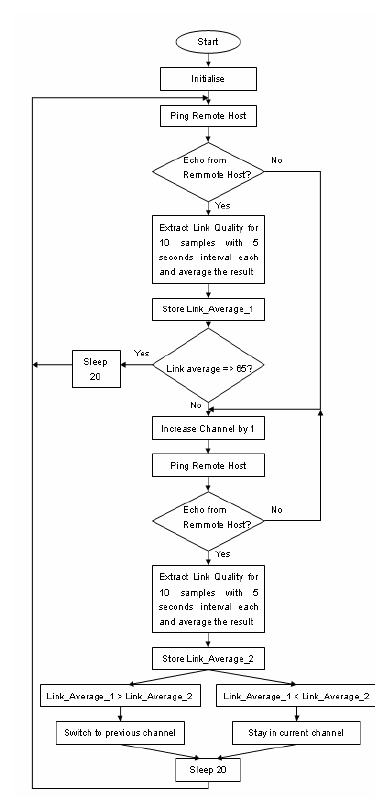 The
University of Adelaide
Home |
School EEE
The
University of Adelaide
Home |
School EEE 

ELEC ENG 4039A/B
FINAL YEAR HONOUR PROJECT
OPTIMISATION WLAN FOR BROADBAND ACCESS

Related Link
Dynamic Channel Switching
Noise level can cause by receiver noise or environment noise or interference from other devices operating at the same frequency. One of the possible ways to overcome this noise problem is to dynamically switch channels in that frequencies range until finding the good SNR value ultimately good link quality.
The design of DCS was making use of ping and iwconfig command to extract the link quality of current channel. Figure 6.4 shows the DCS flow chart. As can be seen from the flow chart, the network is initialised operating in channel 1. Then, the remote host is ping to check if a link exists between host and AP. If no echo response is received from the host, the DCS module will switch the operation to the next channel.
DCS module will get 10 samples of the Link Quality in 5 second intervals. It calculates and stores the average of 10 samples. DCS will switch to next channel if the link quality of current channel is less than 65. For reliability purpose, DCS will redo the above process and compare the link quality between current channel and previous channel to ensure that the link quality of current channel is better than the previous one, or else, DCS will switch back to previous channel.
Algorithm

Details of Optimisation Techniques:
Dynamic Changing Fragmentation Threshold
Back HOME
Copyright © The University of Adelaide 2006
Copyright | Disclaimer | Privacy
